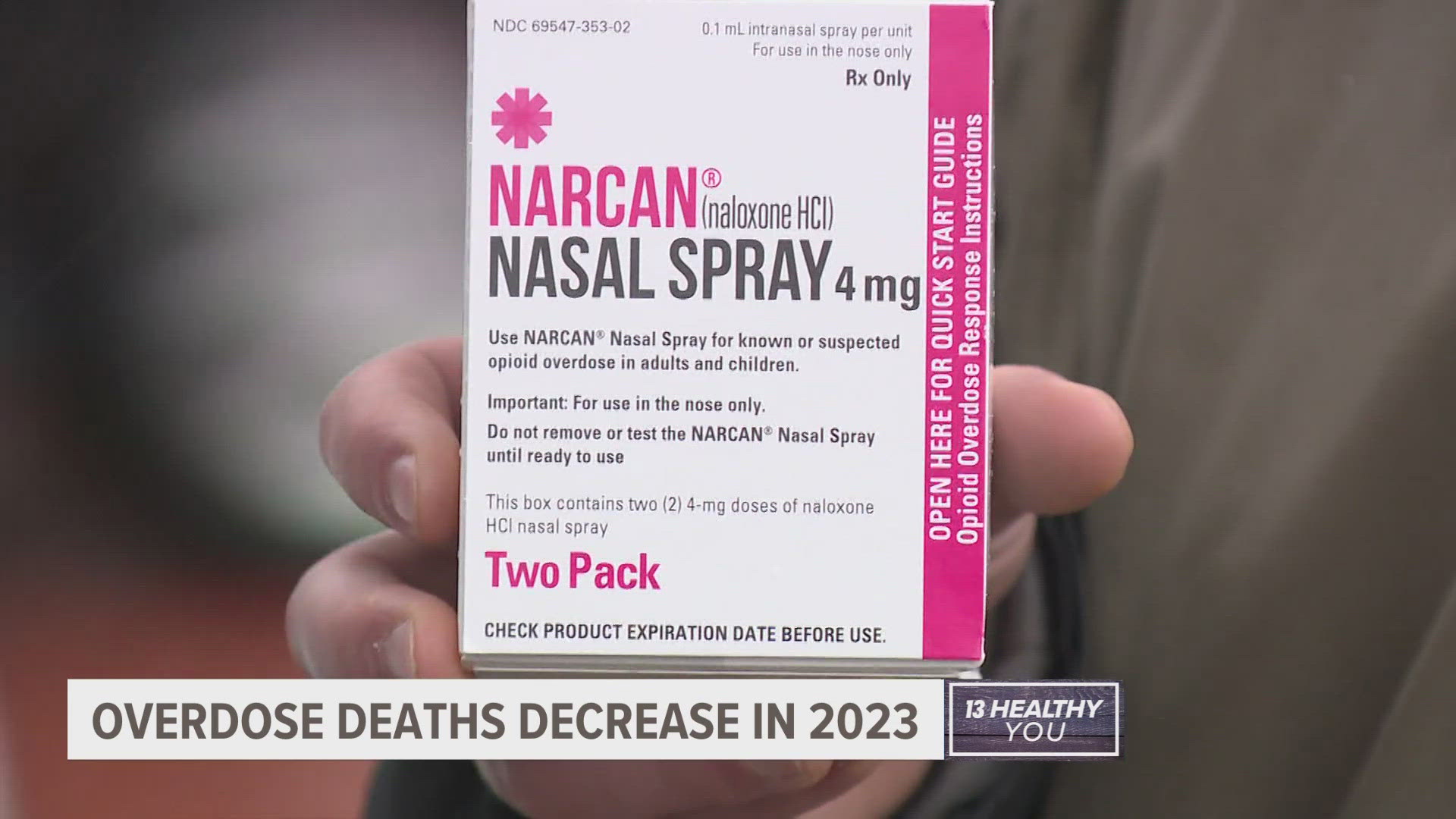GRAND RAPIDS, Michigan — Nationally, drug overdose deaths trended down for 2023 for the first time in five years. According to the Centers for Disease Control and Prevention (CDC), about 3,500 fewer people died from drug overdoses in 2023 than in 2022.
Still, more than 107,000 people died of overdoses in America last year.
Kent County is seeing similar trends. According to the Kent County Health Department (KCHD), there was a 15% decrease in drug overdose deaths overall, and a 30% decrease in opioid related overdose deaths.
"Super encouraging," said Rachel Jantz, epidemiologist with KCHD and heads up the Opioid Task Force. "We have been working really diligently as a county. We have our Kent County Opioid Task Force, which aligns a lot of our community partners around specific strategies to mitigate over overdose deaths. So, it's really encouraging when we start to see this decrease."
There are a few possible reasons for the decrease. For one, the increased access to naloxone, or Narcan, available over the counter. Narcan is the drug that reverses opioid overdoses.
"[Also], access to medications for opioid use disorder, such as methadone and buprenorphine have became more widely available," said Jantz. "And I think that the stigma around drug use disorder is really decreasing in our community."
However, she pointed out the decrease is not universal. While overall the county has seen a decrease in overdose deaths, the death rate among the Black population is nearly four times as high as the white population.
"We need to make sure that we're continuing to invest in resources that can make the ability to survive opioid overdose and make it through opioid use disorder equitable across populations," said Jantz.
She said eight or nine out of ten overdose deaths in Kent County are due to fentanyl.
While opioid use disorder and opioid overdose deaths make up most of the statistics, Jantz said that is not all they are fighting.
"What we have seen over time is an increase in stimulant overdoses, such as cocaine and methamphetamine" said Jantz. "So, while we have seen this decrease in opioid involved overdoses, we're beginning to see an increase in stimulant overdoses."
She called the overdose epidemic "super dynamic."
Opioid use disorder began in the late 1990s, and steadily grew from there. During the COVID-19 pandemic, the nation saw another big jump in overdosed deaths. According to the CDC, overdose deaths grew 30% between 2019 and 2020, rising another 15% by 2021.
"The beginning of the epidemic, prescription drugs drove a large number of deaths," said Jantz. "And then, we saw heroin. Now, we're seeing fentanyl. So, we know that the epidemic is going to be changing over time. Although we have seen a decrease, it's really important that we remain vigilant in addressing prevention and harm reduction."
The Kent County Opioid Task Force focuses on prevention, harm reduction and treatment. The task force is made up of public health officials, court officials, law enforcement, medical providers and more.
There are vending machines across the state to get Narcan. You can find a list of locations here.
For a list of resources to help with opioid use disorder, click here.
There are also resources available through Pine Rest Christian Mental Health Services, Sanford Behavioral Health. and Trinity Health.
You can also call the Substance Use Disorder and Mental Health Services Administration (SAMHSA): at 1-800-662-HELP (4357).
RELATED VIDEO: Organization offers mental health resources for youth experiencing homelessness
►Make it easy to keep up to date with more stories like this. Download the 13 ON YOUR SIDE app now.
Have a news tip? Email news@13onyourside.com, visit our Facebook page or Twitter. Subscribe to our YouTube channel.

